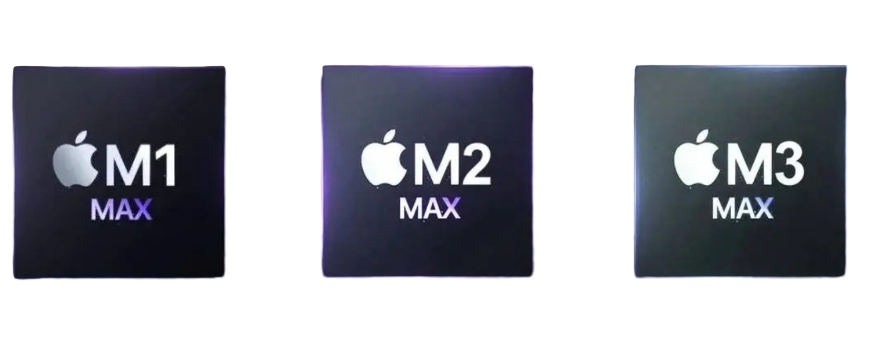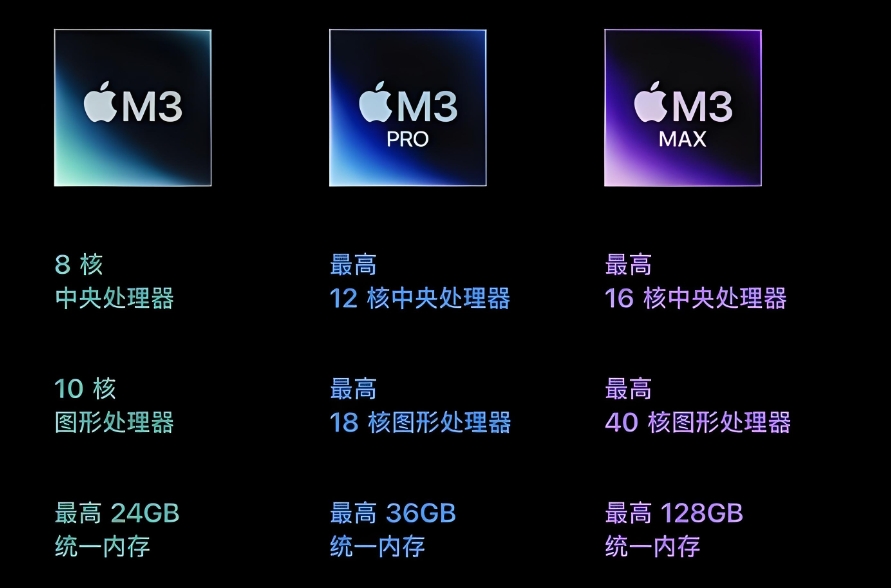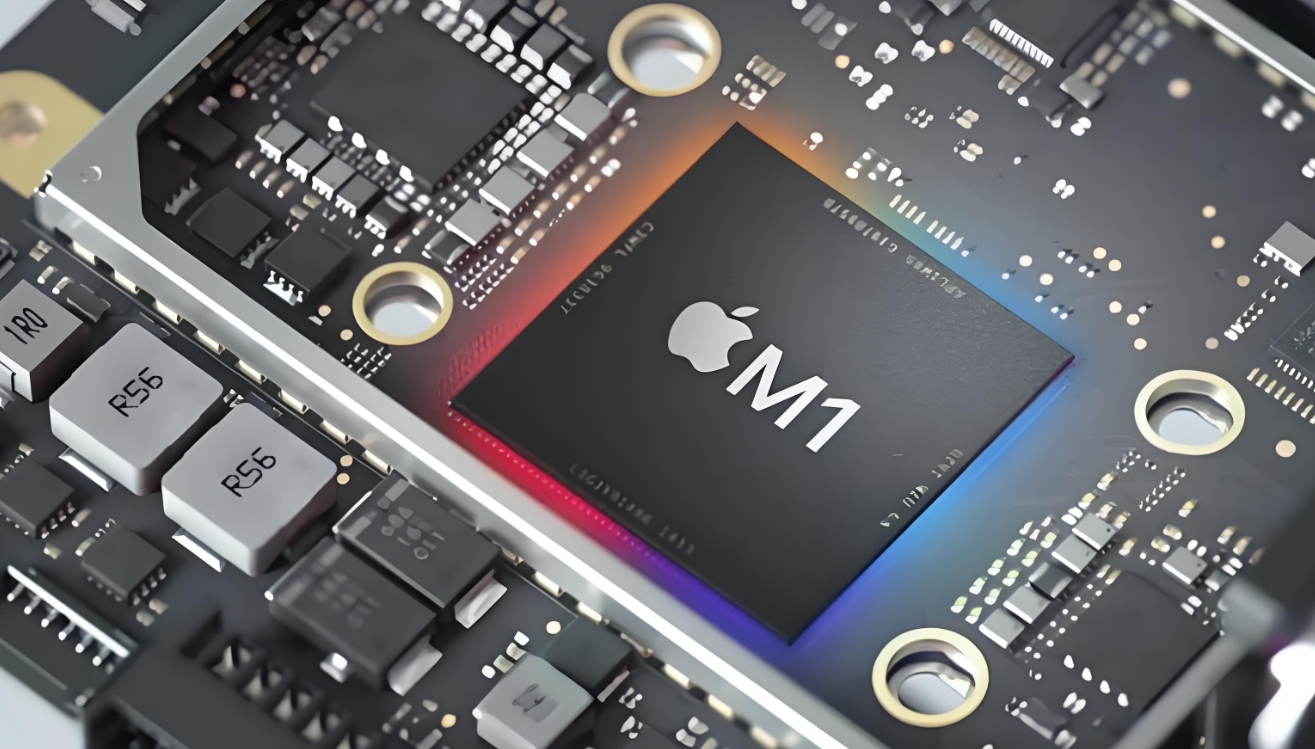Apple M series chip analysis: M3 chip reliable
2024-05-08 11:11:52
Since the advent of Apple M series chips, with its excellent energy efficiency ratio, strong integration capabilities and excellent performance, successfully subvert the pattern of the traditional PC market. The M1 chip achieves the perfect combination of desktop processing power and mobile device battery life through the ARM architecture, and the M2 chip further improves performance and graphics processing power on this basis. Therefore, for the upcoming M3 chip, the industry generally expects it to achieve a greater performance leap while maintaining low power consumption.

M3 chips are expected to use more advanced manufacturing processes (such as TSMC's 3nm or more advanced nodes), which will not only bring higher transistor density, but also effectively reduce power consumption and improve overall performance. In terms of CPU and GPU architecture, M3 is expected to integrate more cores, adopt smarter task scheduling algorithms, and more powerful neural network engines, which will bring significant improvements in AI applications, video rendering, and game experience.
The technological innovation of Apple M3 chip
A notable feature of Apple's self-developed chips is the highly integrated design, and the M3 chip is expected to have new breakthroughs in this regard. In addition to the basic computing unit, the M3 may integrate more customized hardware accelerators, such as acceleration modules for specific tasks such as cryptographic computing, machine learning reasoning, advanced image processing, and more. These optimizations can not only improve the efficiency of data processing, but also provide developers with a broader space for innovation and promote the prosperity of the application ecosystem.
In addition, given Apple's emphasis on security, the M3 chip may further strengthen security features at the hardware level, such as enhanced encryption technology and better privacy protection mechanisms to ensure the safety of user data.
The impact of Apple's M series on the market
The success of Apple's M series chips has forced traditional chip giants such as Intel and AMD to accelerate their transformation, and has also inspired other manufacturers such as Qualcomm and Samsung to increase investment in self-developed chips. The introduction of the M3 chip will undoubtedly continue to intensify this competitive situation, driving the entire PC processor market to more energy efficiency, stronger performance, and more personalized direction.
For consumers, the high performance and low power consumption of the M3 chip will make the Mac product line equipped with the chip more competitive in the fields of thin and light books, creative design, and professional workstations. At the same time, the closed nature and optimization ability of Apple's ecology may also attract more developers to exclusively optimize M series chips, forming a positive cycle and further consolidating Apple's position in the high-end market.
Although the M3 chip is promising, the challenges it faces cannot be ignored. On the one hand, the limit of semiconductor process is approaching, which makes the marginal benefit of each process upgrade decrease, and how to continue innovation under the physical limit becomes the key; On the other hand, with the increase of uncertainty in the global supply chain, how to ensure the stable supply of chips is also an issue that Apple needs to consider.
In addition, Apple also needs to balance the relationship between technological innovation and cost control to ensure that M3 chips can provide top performance while maintaining a reasonable market price to meet the needs of consumers at different levels.
What are the M3 series chips
Apple M3 series chips mainly include the following three types:

-
M3: This is the base chip in the M3 series, equipped with an 8-core CPU and 10-core GPU for most daily use and moderate workload needs.
-
M3 Pro: A performance upgrade over the M3, with a 12-core CPU and 18-core GPU, suitable for professional applications and multitasking scenarios that require higher performance.
-
M3 Max: The most powerful version of the M3 series, with a 16-core CPU and up to 40-core GPU, designed for the most demanding professional work and extreme graphics processing needs.
All M3 series chips are manufactured using an advanced 3 nm process, which allows them to deliver more powerful performance while maintaining good energy efficiency. In addition, these chips may also include other advanced technologies such as dynamic caching, hardware-accelerated ray tracing, etc., to improve overall computing and graphics processing power
The difference between M3 chip and A16 chip
The following INFINITECH summarizes the main differences between Apple's M3 chip and the A16 chip:
In terms of application scenarios:
M3 chips: Mainly used in Apple's Mac line of computers, including laptops and desktops, emphasize high performance, multitasking, professional application support, and long-term energy efficiency.
A16 chip: Designed for Apple's smartphones, such as the iPhone, focuses on mobile device energy balance, instant response, advanced photography and video processing, and mobile gaming experience.
In performance and architecture:
M3 chips typically have more CPU cores, more powerful Gpus, and a larger unified memory pool to meet the needs of desktop-level applications, especially when dealing with complex professional software, large-scale data crunches, and high-end graphics rendering.
Although the A16 chip is in the high performance class of mobile platforms, compared to the M3, it is designed to focus more on battery life, heat management, and integration of compact devices, and may have more efficient cpus and Gpus to adapt to mobile environments, while including neural network engines optimized for AI and machine learning.
In terms of process technology:
According to the previous description, the A16 chip uses a 4nm process, while the process information about the M3 chip is not directly given, but based on industry trends, M3, as a relatively new chip, may use a more advanced process, such as 3nm or similar next-generation technology, which will bring better energy efficiency and performance improvements.
Feature set:
The M3 chip supports more high-speed I/O interfaces such as Thunderbolt and more external display connectivity, making it more suitable for workstation Settings.
The A16 chip integrates more features for mobile communications, such as a 5G modem and an image signal processor (ISP) optimized for mobile photography.
The M3 and A16 chips are both high-end processors developed by Apple, but they are specifically optimized for different device needs, with the M3 for professional-grade computing and creative work, while the A16 is focused on delivering a top-of-the-line smartphone experience.
The difference between Apple's M series chips
The Apple M Series chips are a series of ARM-based system-on-chip (SoC) designed by Apple for its Mac computer line to provide high performance and energy efficiency. The following is an overview of the main models of M series chips and their features:
M1 chip:
5 nm process is used.
It integrates an 8-core CPU (4 high-performance cores and 4 high-efficiency cores) and a 7/8 core GPU (depending on model).
Includes a neural network engine optimized for machine learning tasks.
Provides an excellent energy consumption ratio and significantly improves the battery life of the MacBook.

M2 chip:
The same 5-nanometer process is a small upgrade to M1.
The CPU maintains an 8-core design, and the GPU is increased to 10 cores.
CPU performance improved by about 18% and GPU performance improved by about 30%.
Although enhanced in some respects, it has been criticized as a "toothpaste" upgrade, and there is a certain compromise in the hard drive read and write speed.
M3 chip (latest mention) :
A more advanced 3 nm process is used.
The low-power version comes with an 8-core CPU and 10-core GPU, and supports up to 24GB of unified memory.
Performance is about 15% better than M2, but there are some compromises with fewer interfaces.
A new black model has been introduced, but the entry-level configuration (8GB of RAM) is likely to be less expensive for professionals.
M1 Pro chip:
Maintain a 5 nm process, designed for professional users.
The base model has 8 core cpus and 16 core Gpus, which significantly improves graphics processing power.
Support more lightning interfaces, enhanced peripheral connectivity.
M2 Pro chip:
Continue to use the 5nm process.
The base configuration is increased to 10 core cpus and 16 core Gpus.
Compared to the M1 Pro, CPU performance is improved by about 15% and GPU performance is improved by about 30%.
Support two-sided lightning interface, more expansibility.
With each generation update, the M series chips have been enhanced in terms of performance, energy efficiency, graphics processing power and professional functions. The M3, as the latest iteration, uses more advanced manufacturing processes that bring further improvements in performance, although functional trade-offs may have been made in some configurations. The choice of which chip generation depends mainly on the user's performance needs, budget, and preference for specific features.
















